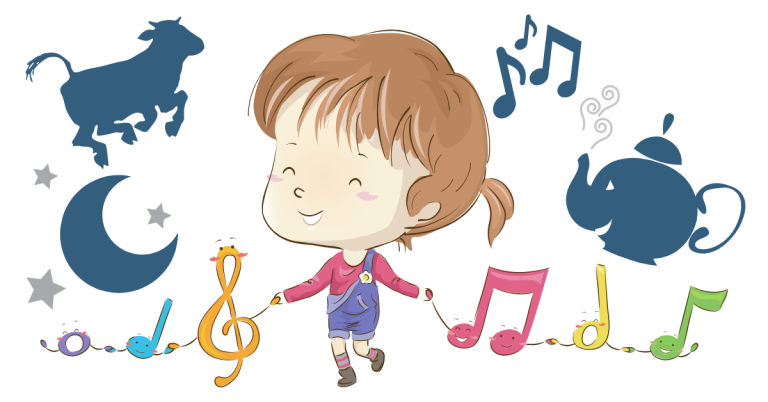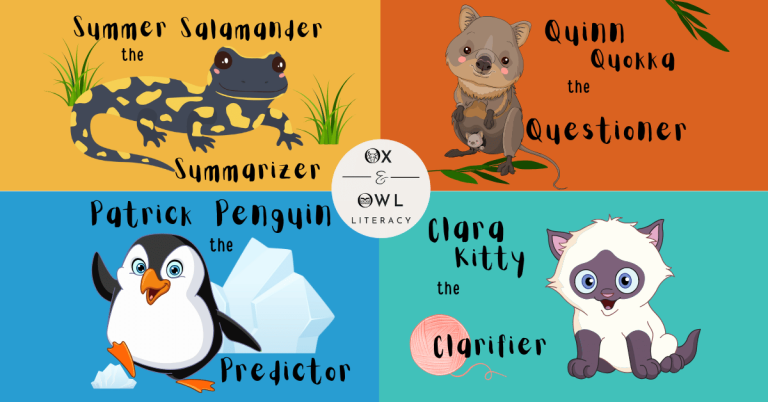Rhymes Resonance: How Rhyme Shapes Early Literacy
Uncover the magic of rhyme as it playfully hones phonological awareness, expands vocabulary, and lays the foundation for a lifelong love of language in the hearts of little learners.

Ox & Owl Questions to Ponder
Why is rhyme considered such a powerful tool in early language and literacy development?
Could rhyme actually shape the way young brains hear, think, and remember?
How does rhyme help children not just hear sounds — but feel the joy of language?
Can silly rhymes and playful songs really lay the foundation for critical and creative thinking?
Language literacy is one of the most important competencies in life, which predicts the later development of critical and creative thinking. And in the symphony of language acquisition, there exists a famous and powerful conductor – rhyme.
From honing phonological awareness and expanding vocabulary to increasing engagement and retention, rhyme emerges as an excellent tool in orchestrating an immersion of cognitive and linguistic development.
Grab yourself a warm drink, snuggle in, and enjoy this thoughtful exploration of the profound impact of rhyme on early literacy and fostering a lasting appreciation for language.
Each rhyme, a bridge into a world of delight, a symphony of language, taking flight.
Ox & Owl Literacy
From first spoken words to clever tales we tell, its literacy in motion, casting a spell.
The Spell of Rhyme
Rhyme, in its simplest form, is the repetition of similar sounds, occurring at the end of words. This skill involves identifying words that sound similar, such as “cat” and “hat” or “moon” and “spoon.”
Rhyme has an enchanting quality that can be likened to casting a spell on our minds.
The rhythmic repetition of similar end sounds creates a pattern that not only delights the ear but also weaves a sense of predictability and familiarity. This repetition subtly influences our cognitive processes.
Additionally, rhyme often evokes a sense of playfulness and whimsy, creating an emotional connection to the words being used. This emotional resonance makes the experience not only intellectually engaging but also emotionally enriching.
So, let’s sprinkle a bit of magic into our daily activities, infusing stories, songs, and playful conversations with the charm of rhymes. In doing so, we pave the way for the early literacy adventure that awaits our young learners. It’s not just teaching rhyming; it’s weaving a spell of language that is both delightful and empowering.
In the next section, we dive into the ways rhyme benefits our little learner’s journey.
Rhyme is a…
Building Block of Phonological Awareness
Phonological awareness is about learning to hear, isolate, and play with sounds within a spoken language. Children begin to learn these important listening skills when they are immersed in inviting rich-language environments.
Rhyming is a useful tool for helping children hear language patterns and sounds within words. Simply listening to rhyming patterns in nursery rhymes, children’s songs, rhyming books, and poetry provides children with important exposure to language patterns that will aid future reading and writing. Preschoolers may start to detect rhyming words, understanding that words like “log” and “frog” sound similar.
Rhyme is a…
Gateway to Imaginative Visualization
Visualization involves creating mental images. We encourage visualization through listening to oral storytelling and when children read books. When children engage in mental imagery, they create vivid mental pictures, facilitating a deeper understanding of the content.
This visualization not only aids in retaining information but also lays the groundwork for enhanced reading comprehension as children transition from listening to reading. As they mentally anticipate the progression of events, children actively engage with the material, honing their ability to infer and deduce meaning.

Additionally, readers who can vividly picture the events and details of a story are more engaged in the reading process because visualization promotes an immersive reading experience, capturing the reader’s interest and attention. In short, the more children can visualize what they read – the more likely they will enjoy reading – leading to them reading more!
Rhyme is a…
Foundation for Enhanced Retention
There are a few different aspects to why rhymes are a fantastic tool for aiding retention.
First and foremost, the cadence and humour in rhyming texts are great at keeping a child’s attention and interest, building their ability to attend/focus.
Presenting information in rhyming form not only makes it more interesting and enjoyable but also establishes a positive emotional connection. Rhyme can evoke emotions, and when words are paired in a rhyming fashion, it cultivates a memorable and emotionally resonant experience, significantly boosting the likelihood of retention.
We all know from our own experience that the more motivated, invested, and engaged we are with what is being taught, the more we connect with the material. This in turn influences how we learn, think, and apply the material and also influences what we retain. And when it comes to long-term retention, rhyme and song are the dream team.
Most of us can still recall the little rhyming metrics we were taught as young children for learning the order of numbers, days of the week, or months of the year. Many people, myself included, revert to rhyme and song to help remember material taught in college and university.

Rhyming’s ability to be a strong mnemonic device lies in its rhythmic and melodic quality, making it more likely to be stored in the auditory memory.
The repetition of similar end sounds forms a predictable pattern, allowing anticipation of what comes next. This predictability enhances familiarity, making it easier for individuals to remember the words and the associated content.
These combined qualities of rhyme facilitate memorization, turning information into a sequence that is easier to remember and recall when needed.
Rhyme is a…
Cultivator of a Robust Vocabulary
The magic of rhyme extends beyond its rhythmic appeal; it acts as a catalyst for vocabulary growth. The repetition of similar sounds in rhyming words not only makes language memorable but also facilitates the acquisition of new words. Rhyming stories and poems introduce children to a rich tapestry of vocabulary, transforming their linguistic landscape with each carefully crafted verse.


One of the greatest gifts you can give your child is the love of
Ox & Owl Literacy
language and story
Rhyme is an…
Architect of Affection for Language & Reading
Rhyme is more than an educational tool; it’s a key to unlocking the joy of reading. As children are immersed in the playful cadence of rhyming literature, they discover the magic of storytelling and the power of words. This early exposure to the pleasures of reading sets the stage for a lifelong love affair with books and learning.

WordPlay Zone

Sing a Counting Song About Ants
Why not sing The Ants Go Marching with your little learner(s)? This is a classic song that helps teach numbers and rhyme.
Get the lyrics for the song The Ants Go Marching and other classic nursery rhymes and songs!

Guess the Compound Riddle
Where ants go marching ten by ten,
You’ll find me gleefully following them.
A tasty snack, a delicious treat,
Ants are what I love to eat.
What Am I?
Addressing Learner Diversity
One main challenge in teaching young children to learn rhyming lies in the diverse range of phonological awareness levels among them. While some children may naturally grasp the concept of rhyming effortlessly, others may struggle with phonological processing. This variation can be attributed to factors such as language exposure, cognitive and physical development, cultural influences, and the presence of phonological disorders.
Tailoring rhyming activities to accommodate varying phonological awareness levels involves providing additional support for those who need it and offering more complex challenges for those who demonstrate a higher level of proficiency. We want to create a flexible learning environment that acknowledges and nurtures individual differences and provides opportunities to explore rhyming at all different stages. Implementing a variety of multisensory activities and incorporating rhyming games tailored to individual learning styles can help bridge the gap for children facing challenges in this area.
Key OOLiteracy Takeaways
Nurturing Little Minds, Sparking Big Dreams

I’m happy you’re here!
Hi, I’m Julie, the passionate creator of Ox & Owl Literacy. I enjoy empowering families and educators with wonderful resources to inspire fun, imaginative, and joyful learning opportunities for young kiddos. You’ll find lots of recommended books, reading resources, and creative learning activities on this site aiming to help children fall in love with language, books, reading, and the transformational power of stories.









